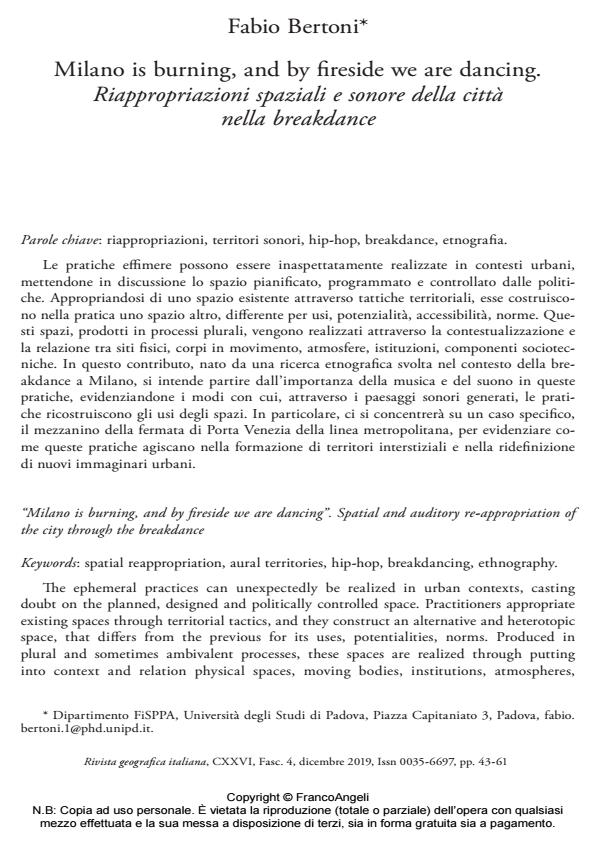"Milano is burning, and by fireside we are dancing". Spatial and auditory re-appropriation of the city through the breakdance
Journal title RIVISTA GEOGRAFICA ITALIANA
Author/s Fabio Bertoni
Publishing Year 2019 Issue 2019/4
Language Italian Pages 19 P. 43-61 File size 143 KB
DOI 10.3280/RGI2019-004003
DOI is like a bar code for intellectual property: to have more infomation
click here
Below, you can see the article first page
If you want to buy this article in PDF format, you can do it, following the instructions to buy download credits

FrancoAngeli is member of Publishers International Linking Association, Inc (PILA), a not-for-profit association which run the CrossRef service enabling links to and from online scholarly content.
The ephemeral practices can unexpectedly be realized in urban contexts, casting doubt on the planned, designed and politically controlled space. Practitioners appropriate existing spaces through territorial tactics, and they construct an alternative and heterotopic space, that differs from the previous for its uses, potentialities, norms. Produced in plural and sometimes ambivalent processes, these spaces are realized through putting into context and relation physical spaces, moving bodies, institutions, atmospheres, and sociotechnical tools. Part of ethnographic research realized in the context of the breakdancing in Milan, this contribution highlights the importance of music and sound in the practices of territorial re-appropriation, as an instrument of the redefinition of urban, material and symbolic boundaries. More specifically, it will start from a specific space, the mezzanine of the underground station of Porta Venezia, in order to deepen the capacities of the interstitial spatial formations to redefine new urban imaginaries.
Keywords: Spatial reappropriation, aural territories, hip-hop, breakdancing, ethnography
Fabio Bertoni, Milano is burning, and by fireside we are dancing. Riappropriazioni spaziali e sonore della città nella breakdance in "RIVISTA GEOGRAFICA ITALIANA" 4/2019, pp 43-61, DOI: 10.3280/RGI2019-004003